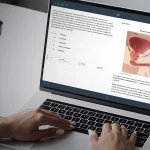For students looking to pursue a career in medicine, the PA option has never been more alluring. With projections of escalating salaries, enticing job incentives, broadening specialties, and skyrocketing job opportunities, the PA profession is a career opportunity too good to pass up for many aspiring health care professionals.
Why Become a PA?
There are a number of reasons to become a PA, but there are 5 factors that are often cited by students who chose the PA path: length of education, competitive salary, better hours, specialty options/versatility, and collaboration.
- Length of Education: After earning a bachelor’s degree, students going into the health care field are weighing approximately 27 months in a PA program and comparing it to 4 years in medical school followed by a residency program. Not only can students begin their career sooner as a PA, they save a considerable amount of money with less student loan debt.
- Competitive Salary: While PAs don’t make as much as physicians, climbing PA salaries have made the profession more desirable in recent years. In 2019, the median PA salary was $112,260 per year ($53.97 per hour).
- Better Hours: Improved work/life balance is a major reason more students are choosing to become PAs. Compared to physicians (particularly those in a residency program), PAs have more time for family, hobbies, time off, and leisure.
- Specialty Options/Versatility: As a PA, there is always the flexibility to change specialties should your interests change. There is a burgeoning list of specialties to choose from, and many PAs are taking advantage of the options to practice in different areas of expertise.
- Collaboration: As a PA, you work in team practice with physicians and other healthcare specialists. PAs operate under a certain level of autonomy (especially in rural areas); however, they always have the security of collaboration.
Growth Increase in Recent Years
According to the National Commission on Certification of Physician Assistants (NCCPA), the number of Certified PAs in the US has increased for 5 consecutive years, with a 6.6% increase in the workforce between 2017 and 2018.
It is not just the amount of positions available that have increased over the last several years, salaries have increased too. Between 2014 and 2018, the average salary for PAs increased by 12.4 percent.
During this time, PAs have not been limited to operating in primary care roles. Due to physician shortages, they are also practicing in specialties such as dermatology, pathology, cardiothoracic surgery, and emergency medicine (just to name a few).
Projected Growth Increase for the Future
One of the most intriguing metrics for industry insiders and students regarding the PA profession is the projected growth track.
According to the U.S. Bureau of Labor Statistics, PAs are among the fastest growing occupations in the United States, ranking #9 for occupations that have “the highest percent change of employment between 2019–2029.”
In 2019, there were 125,500 practicing PAs in America. That is projected to increase by 31% over the next decade, a rate of growth much faster than the average for all other occupations. And salaries have been rising, and are expected to continue rising, as well . . .
According to Forbes, most states have seen “double-digit percentage growth in their average physician assistant salaries from 2013 to 2018.” This salary increase is not expected to slow anytime soon.
The growing demand for PAs, in addition to growing PA salaries, make this a more appealing career choice than ever.
The Future Is Bright
The PA profession is evolving, offering a myriad of new opportunities. Through consistent statutory and regulatory changes, PAs are being afforded more access and responsibilities with each new year.
NCCPA President and CEO, Dawn Morton-Rias, says it this way: “The PA profession continues to be a rewarding and eagerly sought career choice. Not only are PAs making a difference in the more than nine million patients’ lives each week, this profession offers clinical flexibility, growth opportunities, and competitive salaries.”
Just this year (2020), U.S. News and World Report ranked PAs as the #3 best job overall and the #2 job in healthcare.
Factors that will affect change for PAs in the near future include:
- Technological advances (the expansion of telemedicine)
- An increased number in accredited educational programs to meet the growing demand
- Significant scope of practice changes to meed physician shortages
- A continued shift from primary care to specialty care
- Legislative changes to reform scope of practice, supervision, and delegation of authority
To learn more about our comprehensive PANCE online exam prep resource, which helps you prepare for more than just the PANCE but to also become a better clinician from day one, visit pa.uworld.com.
References
https://www.bls.gov/ooh/healthcare/physician-assistants.htm
https://www.bls.gov/ooh/fastest-growing.htm
https://money.usnews.com/careers/best-jobs/physician-assistant
https://www.staffcare.com/physician-blogs/the-future-of-physician-assistant-practice-authority-sop/




